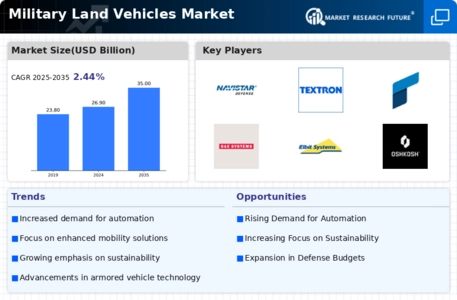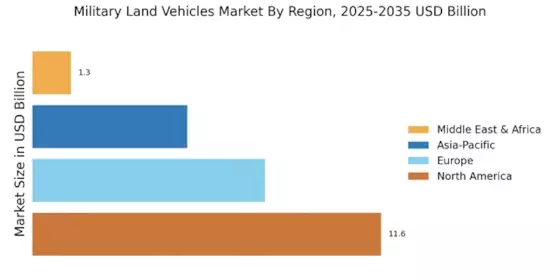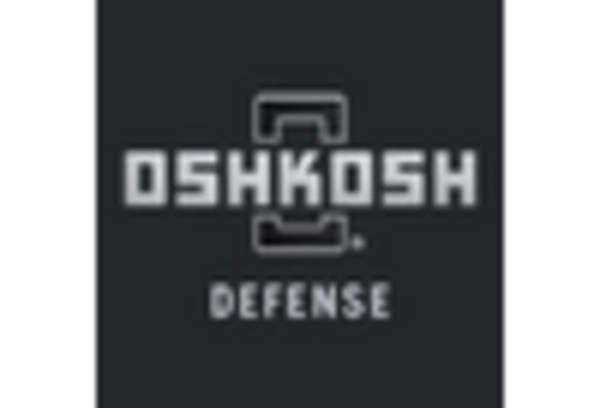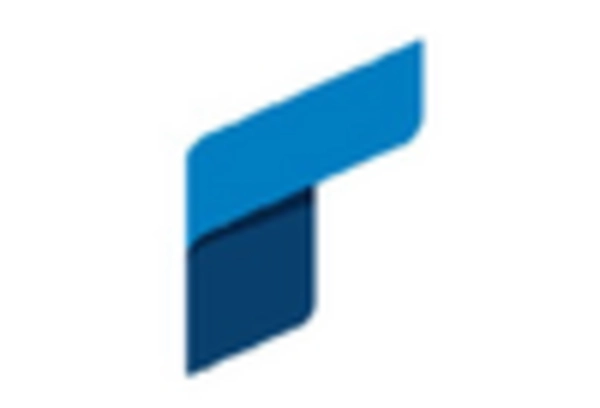Geopolitical Tensions
Geopolitical tensions continue to influence the Military Land Vehicles Market significantly. Ongoing conflicts and territorial disputes have prompted nations to reassess their military strategies, leading to increased demand for land vehicles. For example, the rise in border skirmishes and military posturing in various regions has resulted in a heightened focus on land force capabilities. This situation may lead to accelerated procurement processes for advanced military vehicles, as countries aim to ensure operational readiness. The interplay of international relations and military preparedness is likely to sustain growth in the market, as nations invest in technologies that enhance their ground combat effectiveness.
Increased Defense Budgets
The Military Land Vehicles Market is experiencing a notable surge in defense budgets across various nations. Governments are prioritizing military modernization, which includes the procurement of advanced land vehicles. For instance, recent reports indicate that defense spending has increased by approximately 3-5% annually in several regions, reflecting a commitment to enhancing military capabilities. This trend is likely to drive demand for armored personnel carriers, tanks, and other tactical vehicles, as nations seek to bolster their ground forces. The emphasis on readiness and deterrence is expected to further fuel investments in military land vehicles, thereby creating a robust market environment.
Technological Advancements
Technological advancements are reshaping the Military Land Vehicles Market, driving innovation and enhancing operational capabilities. The integration of cutting-edge technologies such as artificial intelligence, autonomous systems, and advanced materials is revolutionizing vehicle design and functionality. For instance, the adoption of AI in battlefield management systems is expected to improve decision-making processes and operational efficiency. Furthermore, the market is projected to grow at a compound annual growth rate (CAGR) of around 4-6% over the next few years, largely attributed to these technological innovations. As militaries seek to maintain a competitive edge, investments in research and development for next-generation land vehicles are likely to increase.
Urban Warfare Requirements
The evolving nature of warfare, particularly urban combat scenarios, is influencing the Military Land Vehicles Market. As conflicts increasingly occur in urban environments, there is a growing need for vehicles that can navigate complex terrains and provide enhanced protection. This shift is prompting military forces to invest in lighter, more agile vehicles equipped with advanced armor and weaponry. Reports suggest that the demand for urban warfare-capable vehicles is expected to rise significantly, as militaries adapt to the challenges posed by densely populated areas. This trend may lead to the development of specialized vehicles designed for urban operations, thereby expanding the market.
Sustainability and Environmental Concerns
Sustainability and environmental concerns are becoming increasingly relevant in the Military Land Vehicles Market. As nations strive to reduce their carbon footprints, there is a growing emphasis on developing eco-friendly military vehicles. This includes the exploration of alternative fuels and energy-efficient technologies. The market is witnessing a shift towards hybrid and electric vehicles, which not only meet operational requirements but also align with global sustainability goals. The potential for reduced operational costs and enhanced public perception may drive further investments in green technologies. Consequently, the focus on sustainability is likely to shape the future landscape of military land vehicle procurement.


















Leave a Comment